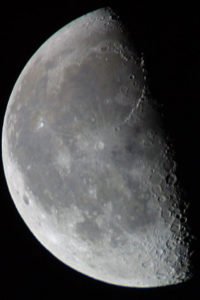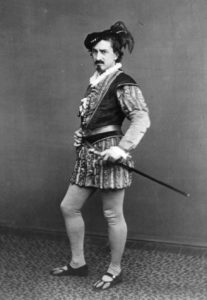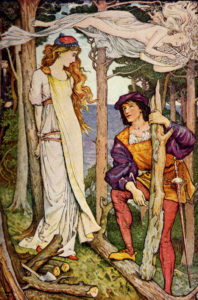 SCENE: Typical school day breakfast. I am kneeling down and reaching into a lower cabinet, where we keep the appliance type things, so breakfast smoothies can be made.
SCENE: Typical school day breakfast. I am kneeling down and reaching into a lower cabinet, where we keep the appliance type things, so breakfast smoothies can be made.
Older Geeklet: I remember what I wanted to tell you. Did you know that all the moons of Uranus are named after Shakespeare characters?
Me: No, they’re not.
Older Geeklet: …
Me: …a couple are named for a different play. (* Alexander Pope’s Rape of the Lock, though I mistakenly thought they were from an Edmund Spencer work at the time).
Geeklet: Well, yeah, true, I knew that.
Me: Anyway.
Geeklet: Anyway. So they came up in astronomy class, and I was so excited, because I had this great piece of trivia, and I was waiting for it to come up so I could answer! … and it didn’t. He just said Uranus has a lot of moons and there’s nothing special about them.
Me: Well, that stinks. It’s also not true. Did he mention that two of the moons are going to collide? Go back and tell him you learned that on your dad’s Shakespeare blog!
Researching this post got me looking at the evolution of my knowledge on this subject. After all, “Uranus” isn’t a word that comes up often in other contexts, so it’s easy to search.
April 2006 – I learn about Uranus’ moons. Amusingly I avoid mentioning “Umbriel” at all here. I expect that at the time I was very new and thinking, “I don’t recognize that character, so I just won’t draw attention to that one.” Meanwhile “Belinda” is buried in the middle, there, and I always miss that one. “Umbriel” is close enough to “Ariel” that you want to think they go together because they do. The Ariel referenced here is from Pope’s work, along with Umbriel. This is not Shakespeare’s Ariel.
March 2008 – I learn more about why the moons are named like they are, chronologically. I also learn about the Umbriel/Ariel connection, and take note of Belinda there in the middle (the newest discovery, so technically she’s at the very end of the list).
September 2017 – Soon (astronomically speaking) there will be fewer moons. In about a million years, astronomers think that Cressida and Desdemona are going to crash into each other. I wish it had been two characters from the same play, then we could have worked that backwards into the storyline. But Cressida, of all possibilities? Boring.
January 2019 – My daughter comes home disappointed that she is not given the opportunity to share this information with her astronomy class.

 “Then I guess we’re gonna have to go Mission Impossible on this one, because I need to see what that argument was. I’m thinking we lower you into the room on cables, thread you through the laser security, and bam! You get to the file cabinet, you take some quick pictures of his homework, then we yank you out of there. No one’s the wiser.”
“Then I guess we’re gonna have to go Mission Impossible on this one, because I need to see what that argument was. I’m thinking we lower you into the room on cables, thread you through the laser security, and bam! You get to the file cabinet, you take some quick pictures of his homework, then we yank you out of there. No one’s the wiser.” I may have mentioned in a previous post that my daughter had an in-class essay assignment for her Monsters in British Literature course (which we have been incorrectly calling her Shakespeare course, because although they studied The Tempest, they also studied Beowulf and Frankenstein). The assignment was to identify the monster in the story, and make your case. She chose Antonio. At the time I thought this was a one off, “Next time we have class we’re going to write an essay.” It was actually a research project. For several days her homework was to gather notes and make her case. And then, at the designated class, did they all write it up.
I may have mentioned in a previous post that my daughter had an in-class essay assignment for her Monsters in British Literature course (which we have been incorrectly calling her Shakespeare course, because although they studied The Tempest, they also studied Beowulf and Frankenstein). The assignment was to identify the monster in the story, and make your case. She chose Antonio. At the time I thought this was a one off, “Next time we have class we’re going to write an essay.” It was actually a research project. For several days her homework was to gather notes and make her case. And then, at the designated class, did they all write it up. Last year one of my daughter’s favorite teachers retired. This week he returned to the school to help mentor some of the freshman class, and my daughter sought the chance to catch up with him.
Last year one of my daughter’s favorite teachers retired. This week he returned to the school to help mentor some of the freshman class, and my daughter sought the chance to catch up with him. Me: “And did you get a chance to actually stand up and maybe put a little something into it? Or was everybody just heads down blah blah blah’ing their way through it with no changing their delivery at all?”
Me: “And did you get a chance to actually stand up and maybe put a little something into it? Or was everybody just heads down blah blah blah’ing their way through it with no changing their delivery at all?”